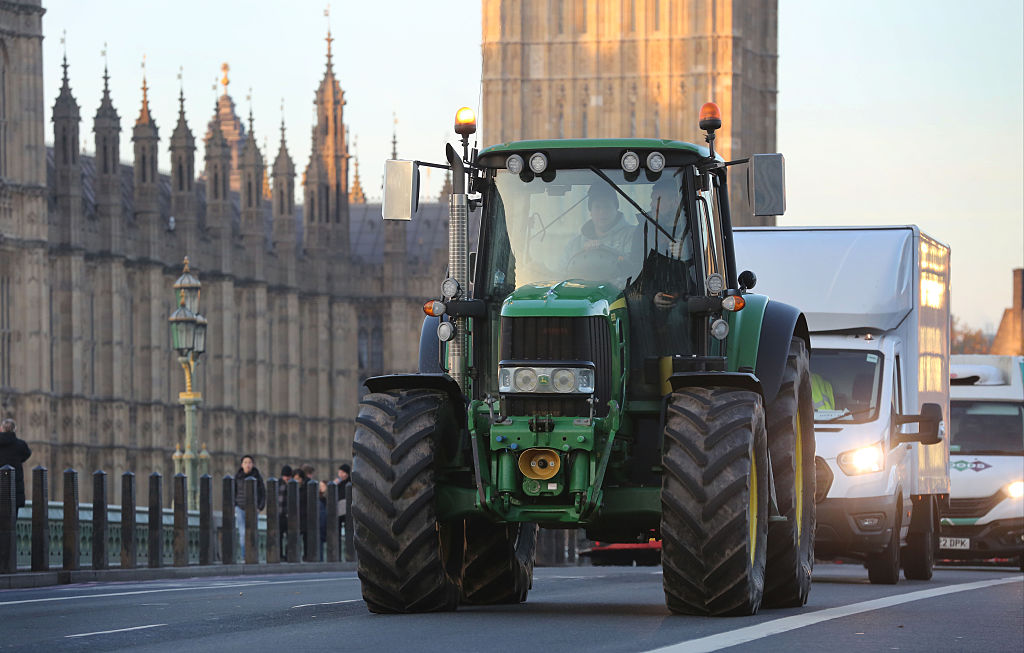Half of UK homes increased in value last year - which towns saw house prices grow the most?
The price of 15 million homes rose in 2024 but will they continue to grow in 2025?


Half of the UK’s 30 million homes increased in value last year but a third dropped in price, research shows.
Analysis from Zoopla reveals that 15 million properties increased in value by 1% or more in 2024, up from almost 11 million in 2023.
The findings come as house prices in the UK dipped by 0.2% month on month in December – the first monthly fall since March last year – according to separate figures from Halifax, Britain’s biggest mortgage lender.
MoneyWeek
Subscribe to MoneyWeek today and get your first six magazine issues absolutely FREE

Sign up to Money Morning
Don't miss the latest investment and personal finances news, market analysis, plus money-saving tips with our free twice-daily newsletter
Don't miss the latest investment and personal finances news, market analysis, plus money-saving tips with our free twice-daily newsletter
Its data showed the average price of a house fell slightly to £297,166.
“Recent rises in mortgage rates may have started to weigh on the housing market at the end of last year a bit more than previously thought,” said Ashley Webb, economist at the consultancy Capital Economics.
Amanda Bryden, head of mortgages at Halifax, added: “Providing employment conditions don’t deteriorate markedly from a more recent softening, buyer demand should hold up relatively well and, taking all this into account, we’re continuing to anticipate modest house price growth this year.”
Where has the price of a home increased the most?
According to the figures from Zoopla, the price of a home in Berkhamstead in the east of England rose the most last year at 53% or £24,500. Next it was Carluke in Scotland at 82% or £8,900, followed by Waltham Forest in London at 64% or £8,700.
Richard Donnell, executive director at Zoopla, said: "The housing market returned to growth in 2024 but the pattern of home value changes across Britain is far from uniform."
One of the biggest casualties, however, was in Kensington and Chelsea in London where prices fell by £44,300 last year.
"Affordability is more of a constraint on price rises in southern England, where the market continues to adjust to higher borrowing costs,” said Donnell.
| Country | Avg. value change over 2024 | % of homes with value increase of 1% or more | No. of homes with value increase of 1% or more | % of homes with value decrease of 1% or more | No. of homes with value decrease of 1% or more |
|---|---|---|---|---|---|
| North West | £4,400 | 63% | 2,090,000 | 21% | 710,000 |
| North East | £4,300 | 68% | 820,000 | 19% | 230,000 |
| West Midlands | £3,900 | 59% | 1,480,000 | 22% | 560,000 |
| Yorkshire & Humberside | £3,700 | 61% | 1,500,000 | 23% | 570,000 |
| Scotland | £3,200 | 61% | 1,580,000 | 24% | 640,000 |
| Wales | £2,300 | 52% | 760,000 | 29% | 420,000 |
| East Midlands | £1,700 | 48% | 1,010,000 | 31% | 660,000 |
| London | £600 | 40% | 1,510,000 | 37% | 1,430,000 |
| South West | -£300 | 37% | 970,000 | 40% | 1,040,000 |
| South East | -£900 | 35% | 1,390,000 | 41% | 1,620,000 |
| East of England | -£1,300 | 33% | 880,000 | 43% | 1,150,000 |
Source: Zoopla
Will house prices rise in 2025?
Further interest rate cuts are expected in 2025. While this sounds like good news for the housing market, the outlook has been complicated by recent political and economic developments.
Inflation has crept up in recent months and could rise further in 2025, partly influenced by policies announced in the Autumn Budget. If inflation stays higher for longer, interest rates probably will too.
Some experts now think the Bank of England will only cut rates three or four times in 2025 – less than previously expected. This will probably mean mortgage rates fall more slowly than previously expected too.
In light of recent developments in the mortgage market, real estate consultancy Knight Frank has downgraded its forecasts for house price growth, but still expects prices to rise by 2.5% in 2025, 2% in 2026 and 3.5% in 2027. This is down from estimates of 3%, 4% and 5% previously.
Tax changes could also dampen buyer demand, with stamp duty thresholds reverting to their original levels from 1 April. This means buyers will need to pay tax on any amount over £125,000, rather than the current threshold of £250,000. The first-time buyer threshold will revert to £300,000 from £425,000.
We could see a surge in activity in the first three months of the year as buyers race to beat the deadline, with demand falling shortly after. Nationwide predicts a “period of weakness in the following three to six months, as occurred in the wake of previous stamp duty changes”.
Meanwhile, estate agent Savills has predicted that top-end properties will suffer the most, with investors being hit by extra stamp duty charges (such as the 5% surcharge on second homes) and changes to non-dom rules. It expects prime central London houses to fall in value by 4% in 2025.
On a regional basis, we could see a continuation of the north-south divide when it comes to house price growth.
Savills expects house prices to increase by 5.0% in 2025 in the North West, the North East, Scotland, and Yorkshire and the Humber. Prices in the East of England and the South West, however, are forecast to increase just 2.5% during the year.
Get the latest financial news, insights and expert analysis from our award-winning MoneyWeek team, to help you understand what really matters when it comes to your finances.
Chris is a freelance journalist, and was previously an editor and correspondent at the Financial Times as well as the business and money editor at The i Newspaper. He is also the author of the Virgin Money Maker, the personal finance guide published by Virgin Books, and has written for the BBC, The Wall Street Journal, The Independent, South China Morning Post, TimeOut, Barron's and The Guardian. He is a graduate in Economics.
-
 Inheritance tax climbdown as agricultural property relief threshold raised
Inheritance tax climbdown as agricultural property relief threshold raisedReforms to agricultural property relief had sparked strong opposition, and the government has now diluted its controversial inheritance tax plans for farmers
-
 Where can I get pension advice?
Where can I get pension advice?A popular directory of pension advice professionals has closed, leaving those seeking help with their retirement unsure of where to go. We look at the options
